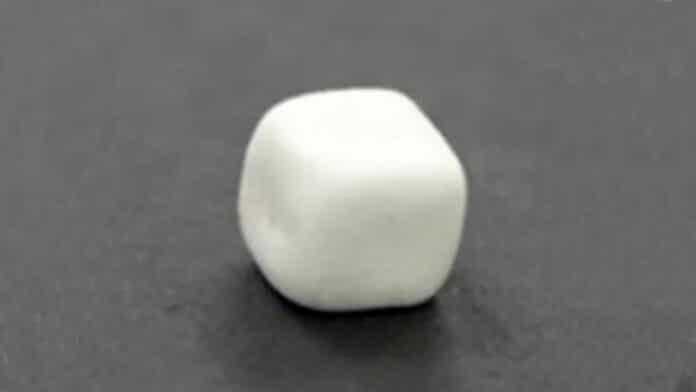Imagine the frustration of a dead phone or a laptop that takes forever to charge. It can be such an inconvenience, especially when you need your device the most. Also, many of us might have delayed buying an electric car because of the limited cruise range (or high price). These battery breakdowns and charge collapses are because of shortcomings of the lithium-ion batteries powering today’s technology.
However, new research at the MagLab is advancing work on a new, better kind of battery that could potentially solve these issues.
The next generation of electronics requires new battery technologies that can overcome the limitations of the current liquid-electrolyte-based lithium-ion batteries that have powered our devices for the past 30 years. One promising alternative is solid-state batteries, which use solid materials as electrolytes instead of liquids.
Solid-state batteries have several advantages over liquid-based ones, such as improved safety, higher energy density, and longer battery life.
However, the major drawback that kept them from wider use has been their high production costs and difficulty in manufacturing them in large numbers.
Now, researchers at Florida State University are working on developing solid-state battery systems that improve performance and are commercially viable. The team is exploring a new solid electrolyte design that could be applied to other systems to further enhance their performance.
The electrolyte is a key component for developing high-performance batteries, acting as a separator between the cathode and anode and facilitating the movement of ions between the electrodes. This enables the battery to charge when connected to a power supply or to supply power when linked to a device such as a phone.
The team at FSU analyzed the structures and properties of a promising electrolyte made of lithium chloride and gallium fluoride. They discovered a strategy to promote ion transport in solid electrolytes.
The researchers used MagLab’s solid-state Nuclear Magnetic Resonance systems to examine the gel-like electrolyte’s structural features that enable ion transport. They found that chlorine and fluorine form charge clustering, freeing up the lithium ions. This could lead to faster charging and longer-lasting batteries.
“The charge-clustering phenomenon helps weaken the bond between the lithium and the other components, so the lithium can move faster, move more efficiently through the electrolyte,” said FSU doctoral student Erica Truong.
“What’s also interesting about this material is it’s not purely solid; it’s more clay-like,” said Truong. She further explained that the clay-like quality of the material makes it highly malleable and easy to shape and mold to fit any space.
“That could be beneficial because it can incorporate into the battery better, improving contact between electrolyte and electrodes,” Truong explained.
The project was in collaboration with Samsung through its Advanced Institute of Technology, which initially designed and synthesized the lithium-chloride and gallium-fluoride electrolyte in 2021. Many electronics companies, including Samsung, are looking for the perfect solid-state battery that enhances performance, ensures safety, and can be easily and affordably produced on a large scale.
According to the Florida State University researchers involved in the project, their findings could lead to the creation of solid-state electrolytes using sodium, calcium, or magnesium, resulting in batteries that outperform current state-of-the-art technology.
Journal reference:
- Sawankumar V. Patel, Valentina Lacivita, Haoyu Liu, Erica Truong, Yongkang Jin, Eric Wang, Lincoln Miara, Ryounghee Kim, Hyeokjo Gwon, Rongfu Zhang, Ivan Hung, Zhehong Gan, Sung-Kyun Jung, Yan-Yan Hu. Charge-clustering induced fast ion conduction in 2LiX-GaF3: A strategy for electrolyte design. Science Advances, 2023; DOI: 10.1126/sciadv.adj9930
